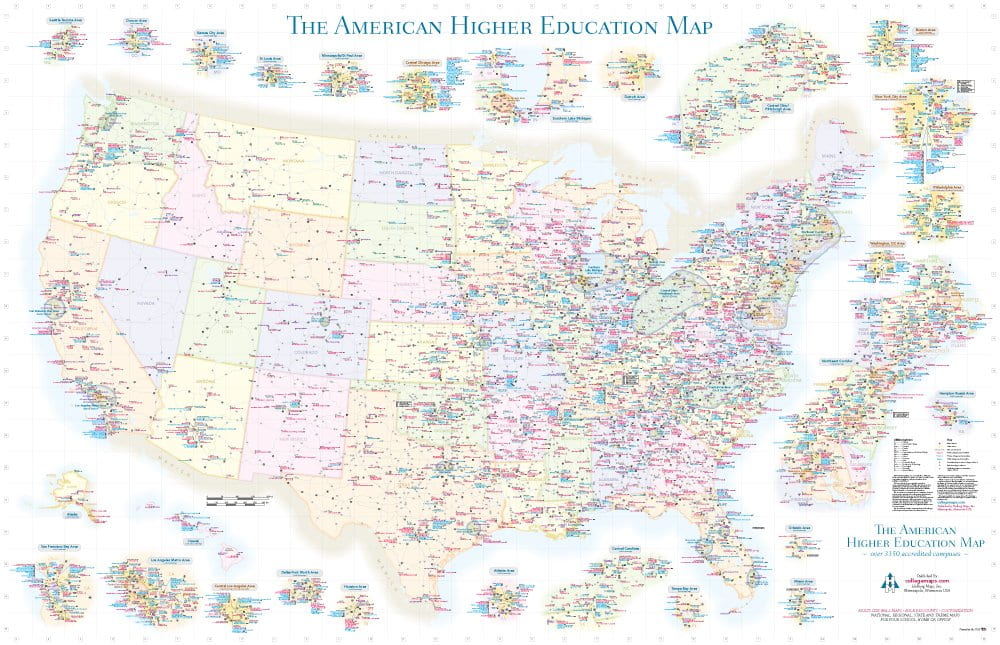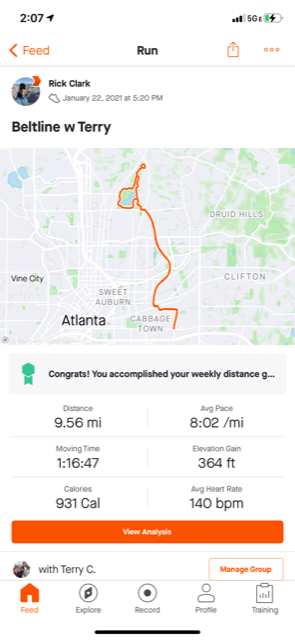Listen to “College Admission: Give Your Full 75%! – Rick Clark” on Spreaker.
In many ways it appears we are nearing the end of the pandemic. While the most uttered term in 2020 was “pivot,” in 2021 “return to normal” is making a strong campaign.
I am urging you not to do that! Do NOT return to normal. Normal is overrated. DO NOT rush back to what was, but instead be very intentional about what you add back to your daily life and commitment list.
If you have not already done so, take some time this week to write down, voice record, or make notes in a document the things that you:
- Really missed
- Did not miss at all
- Can’t wait to get back to
- Hope will never full return
- Lessons learned
- Covid Silver Linings
If you are a junior/sophomore, doing this will be incredibly helpful as you begin your college search. Your answers will point you to identify your needs versus your wants and will help you figure out- and ultimately ask- very specific and pointed questions to admission officers, current students, and faculty members at the colleges you consider.
Maybe what you really missed was the opportunity to discuss what you were reading in smaller settings and receive more personalized interaction with your teachers. Yes, that is important! Yes, that is something to pay attention to and something that actually separates these colleges that, if you simply look at the brochures and online ads seem to all run together with sunny days and kids in pastoral settings earnestly debating issues.
If you are a senior, you are not done. Did someone tell you that? The things you missed really matter as you prepare for your first year. This summer you need to give thought to what those things were and come up with a plan for how you can immediately incorporate them into your life on campus.
Too many students get out of balance in their first semester one way or the other—either they lean too much into academics or allocate too much time and energy into social/community. If you really missed playing soccer or practicing taekwondo when things were shut down, plan to plug into those outlets early and consistently in the fall. First-years often underestimate how important the patterns they set are for mental health, building community, and being successful on all levels in college. This may sound obvious but it’s important- you only get one chance to start right. Make a plan now!
Conversely, if there were certain people (types of people) or habits that you realized during the great pandemic pause that are not healthy and don’t bring you joy/energy, well… don’t go back to them in college. Period.
One of my big lessons from 2020 was: “Control what you can control.” I have now written that on a chalkboard, used it as a screen saver, and am giving some serious thought to ordering a mousepad or trucker hat with that statement soon. (My colleague, Ashley Brookshire, also wrote a great blog on this subject in 2019).
Try This: Before you go to bed tonight use a sharpie to write “CWC” on your hand. This will serve as a reminder for tomorrow morning when you wake up. From the very beginning of your day until you go to sleep, take mental note of what you do and do not control throughout the day.
- How quickly the shower water gets (or stays) hot
- What you eat for breakfast
- The weather/traffic
- The mood of others
- The texts, emails, calls you receive
Take note of what pops up in your day that derails you from getting something done or forces you to put in more time than you originally expected at school, work, practice, and so on. Pay attention to the noises, smells, voices around you.
What do you and do you not really control in your day?
What percentage of your day’s experience did you control?
Do you think if you looked over the course of a month or a year your percentage would be higher or lower than today?
Maybe your control barometer will end up way above mine, but most days (especially during the pandemic) I was not breaking 50%, and often it was way less than that.
Controlling YOUR College Admission Experience
Juniors/Sophomores: How much of your college admission experience do you think you will be able to control? And for seniors, as you look back, how much would you say you controlled?
Do you think that percentage would be higher or lower than your average day? If you trust most of what is written about admit rates, the cost of college, waitlists, and so on, your guess may be in the single digits. BUT after watching this cycle repeat itself for 20 years now, I am here with a very different message. At this point, I am convinced that you control 75%.
25% – Where you apply. There are nearly 4000 colleges and universities in the United States alone. Many of them are already sending you emails, letters, or big brothering their way into your screen and feed. They are courting you, soliciting you, marketing to you, but ultimately it is your choice to apply or not. In other words, you decide the five, seven, eleven (please don’t go much higher than that) colleges you are interested in attending. Where you apply is totally in your control. Think about it this way- YOU are eliminating 99% of possible colleges. Talk about highly selective!
25%- Who offers you admission. So… this would be the part that you DO NOT control. If you or your parents are trying to manipulate or game exactly where you are admitted or how much financial aid you receive, please go watch The College Admission Scandal on Netflix. And if some agent or consultant tells you they “know” how this is going to play out…again, Netflix. Who offers you admission is not up to you, but again that’s only a fourth of this equation.
25%- Which college you select to attend. If you do your research, apply to a balanced list of schools (academically, financially, and selectivity), and remain open to several “top choices,” you are going to have great options. The ball will be back in your court in the spring of your senior year, and you will get to choose from your options.
Unfortunately, most of the conversation, press coverage, and general angst surrounding the college admission experience centers around where students do or do not “get in.” They make it feel like a zero-sum game that ends with either an offer or denial of admission.
In contrast, the people who really know and do this work (admission professionals/ school counselors) are always pointing to options and speaking broadly rather than narrowly. They know that true success is putting yourself in a position to make your own decisions. Your goal is to have choice and options. Which college you attend is up to you.
that true success is putting yourself in a position to make your own decisions. Your goal is to have choice and options. Which college you attend is up to you.
25%- How you show up. Seniors, I am looking at you!
This is the Tom Brady, Steph Curry (insert your favorite athlete, actress, CEO here) portion of college admission. This is about showing up on Day 1 with a mentality of being all in. In my opinion, is the most important part of the pie.
Plenty of kids who “get into their dream school” end up miserable there. Conversely, I’ve spoken to dozens of students in my career who did not end up at their “first choice” (a term I’m campaigning to eradicate) and ended up Kool-Aid drinking tour guides and the college’s biggest cheerleaders (sometimes literally). These are stories and experiences dictated by a mentality, rather than any particular campus.
If you are a senior, this is where your focus needs to be. Regardless of whether the college to which you have committed was your number one in January or not, it needs to be now. Your job is to get your head right this summer. Check your posture and be ready to walk onto campus head up, arms out (this is figurative, my friends), and ready to embrace your new community, and to make the most of the opportunities it presents.
I have said before and will not quit reiterating that the college admission experience, if done correctly, can teach you a ton about your actual college experience and life well beyond. The truth is that being committed, making the best of every day, situation or relationship, and choosing joy, community, and engagement is going to serve you well as a friend, partner, employee, and family member throughout your life.
I always thought it was dumb when people would say, “Give 110%!” because that is not really a thing. But 75%! Now that’s a thing. That is a lot of control. That’s an entirely different story—and it is a good one. Have fun living it out!








